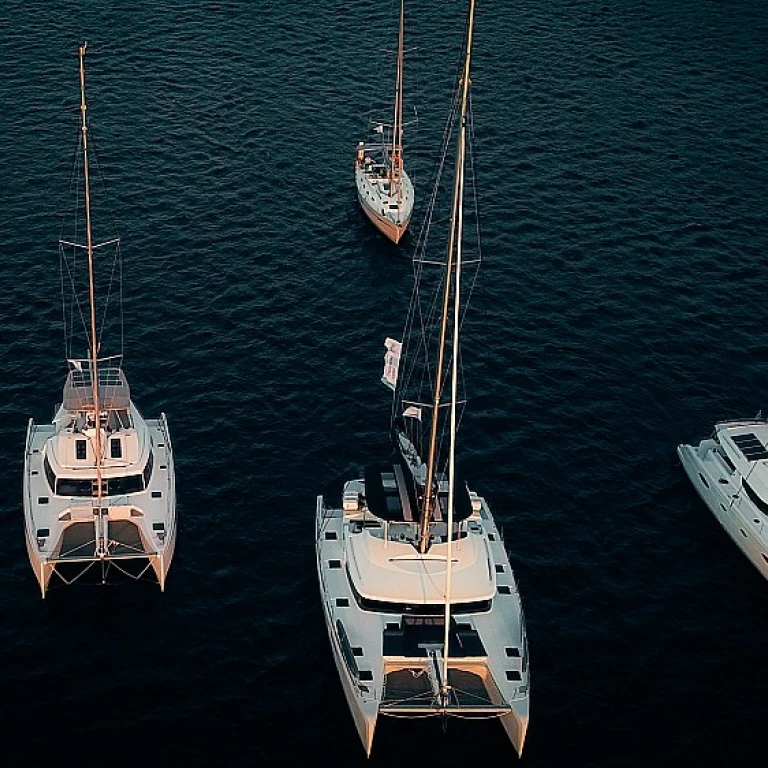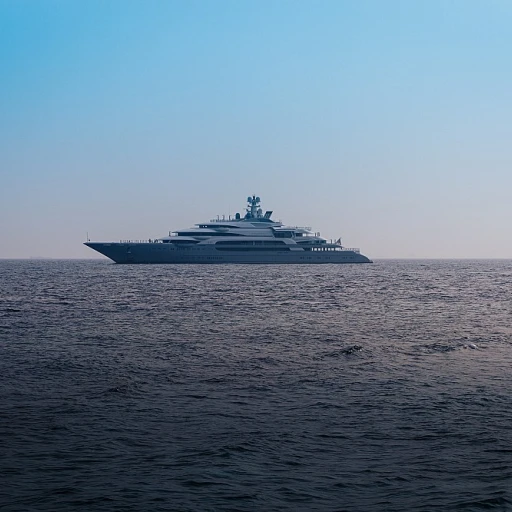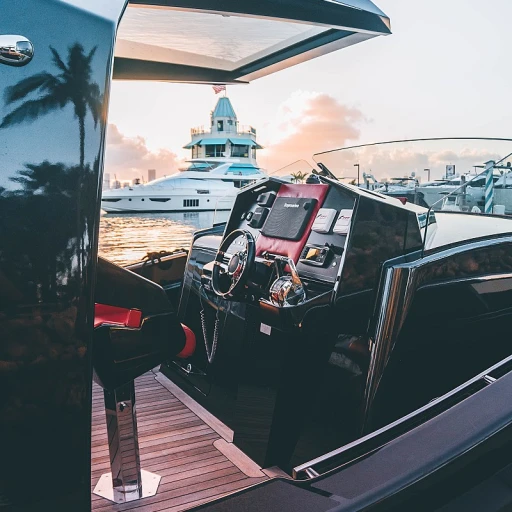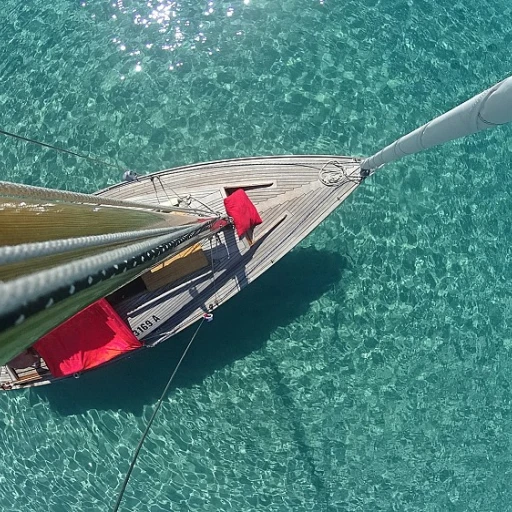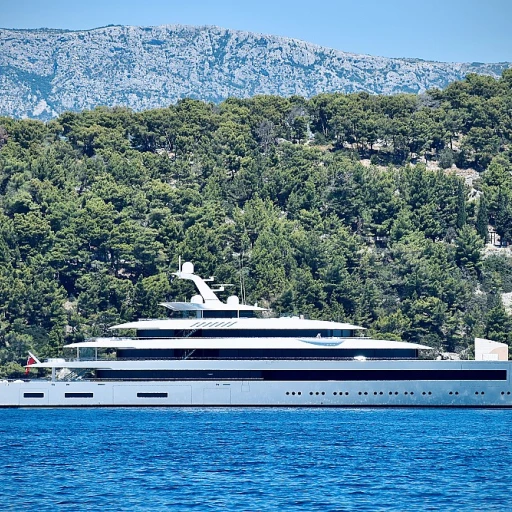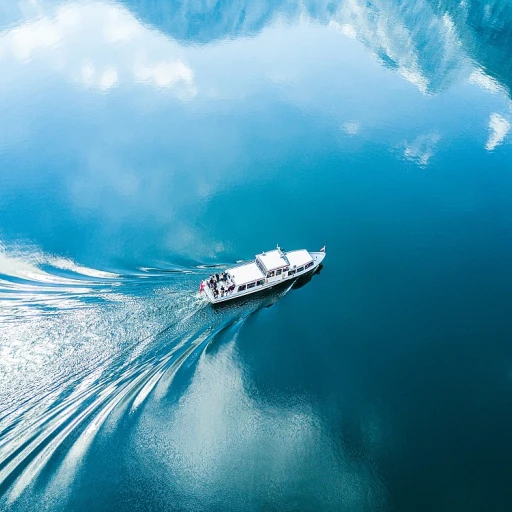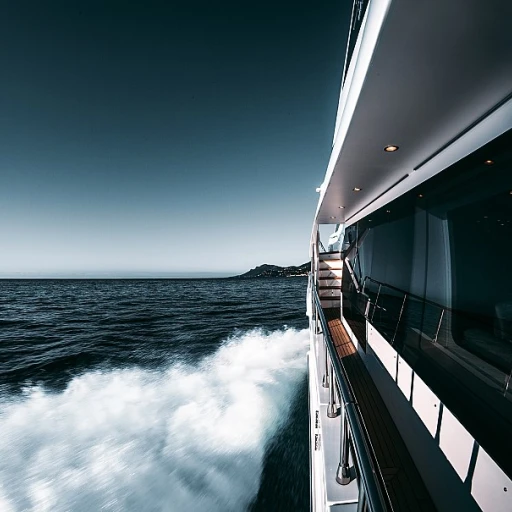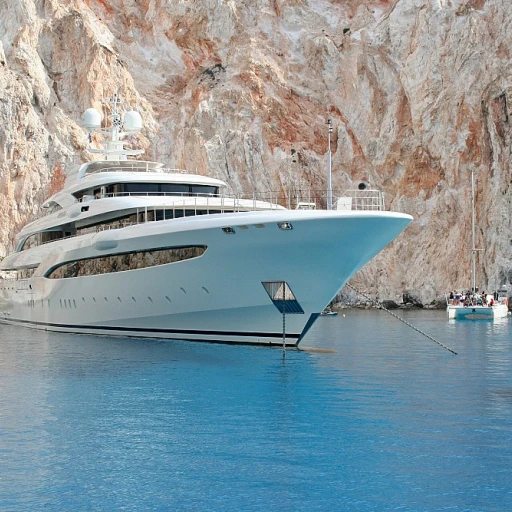-large-teaser.webp)
Understanding Tuna Boats
Comprehending the Essence of Tuna Boats
The world of tuna fishing comprises vessels that are specifically designed to cater to the unique demands of the trade. Breakthroughs in marine design have brought forth a variety of tuna boats, each constructed with precision by experienced builder Calvin Beal and others, ensuring top performance and efficiency. Tuna boats are classed as commercial fishing vessels, engineered to withstand the challenges of open sea fishing. They often come outfitted with robust hulls built to endure harsh marine environments. Not only are they built for durability, but these vessels also focus on maximizing fuel capacity, a critical aspect given the long durations spent at sea. The propulsion systems in these boats are typically comprised of advanced marine engines, including well-respected names in the industry like John Deere and Cummins. Many tuna vessels have twin disc transmissions, allowing for smoother operation under load. It's not rare to find lobster tuna boats featuring diverse engine options, facilitating both efficiency and power during tuna fishing expeditions. Another facet of tuna boats is their vast fish hold capabilities, designed to keep the catch fresh until it reaches the shore. With an increased demand for commercial fishing boats, there is a significant focus on optimizing the space and functionality of the fish holds to accommodate large volumes of fresh tuna. As the market for these specialized vessels evolves, certain factors such as price reductions and current trends significantly influence buyers' choices. Whether you're considering a sale or exploring options for new purchases, understanding these nuances is crucial. For more insight into similar high-performing vessels, consider exploring the market trends similar to those in the Ocean Alexander yachts market.Current Market Trends
Market Dynamics and Trends
The market for tuna boats is as dynamic as the ocean itself, with several trends shaping the industry. The demand for specialized fishing vessels, such as tuna boats, is on the rise, driven by the growing popularity of commercial fishing. Builders like Calvin Beal are responding to this demand by crafting vessels that are not only efficient but also tailored to the specific needs of tuna fishing.
One notable trend is the shift towards more fuel-efficient engines. Many tuna boats are now equipped with engines from renowned manufacturers like John Deere and Cummins, which offer improved fuel capacity and efficiency. This shift is crucial as it helps reduce operational costs, a significant consideration for any commercial fishing venture.
Another trend is the integration of advanced technology. Modern tuna boats are increasingly equipped with sophisticated navigation and fish-finding systems, enhancing their capability to locate and catch tuna effectively. This technological advancement is a game-changer for the industry, allowing for more precise and sustainable fishing practices.
In terms of design, there's a noticeable preference for vessels with robust hulls and spacious fish holds. These features are essential for withstanding the rigors of tuna fishing and ensuring that the catch is stored safely and efficiently. Builders are also focusing on creating versatile designs that can double as lobster boats, offering more value to buyers.
For those interested in exploring the broader yacht market, including the latest trends in luxury vessels, this article provides valuable insights.
The market is also seeing a trend towards reduced prices for pre-owned vessels. With many boats for sale, buyers have the opportunity to purchase high-quality tuna boats at competitive prices. This trend is particularly appealing for those looking to enter the commercial fishing industry without a hefty initial investment.
Key Features to Look For
Features That Make a Difference in Tuna Boats
Tuna boats are specialized vessels designed for commercial fishing, with unique features that make them stand out in the marine industry. When considering the purchase of a tuna boat, there are several key elements to keep in mind to ensure you select a boat that meets your specific fishing needs:- Durability and Construction: Look for boats built with robust, high-quality hulls, often made by expert builders like Calvin Beal, known for their reliable designs. A durable construction ensures the vessel withstands the harsh conditions faced during commercial fishing expeditions.
- Engine Power: The choice of engine plays a crucial role in the boat's performance. John Deere and Cummins engines are popular options known for their durability and fuel efficiency. A powerful engine, such as those featuring John Deere or Cummins options, can significantly enhance the efficiency of fishing operations.
- Fishing Features: Key features, including a spacious fish hold and ample fuel capacity, are essential for extended tuna fishing trips. The ability to store large quantities of catch and cover vast distances without frequent refueling can be a decisive factor for success.
- Navigation and Control: Modern tuna boats often come with advanced navigation systems and twin disc controls, providing captains with precise handling capabilities. This ensures the safety and maneuverability required to locate and catch tuna efficiently.
- Versatility: Some vessels are designed to double as lobster boats, offering versatility for owners engaged in lobster tuna operations. This dual purpose can provide additional revenue streams for commercial operators.
Challenges in the Tuna Boat Market
Overcoming Obstacles in the Tuna Boat Market
The tuna boat industry, while rich with opportunities, presents several challenges that builders and buyers should be aware of. Navigating these obstacles requires insight into various aspects of the market and the specific needs of the commercial tuna fishing sector. One significant challenge is the price volatility. Just as with other commercial fishing vessels, the cost of building or purchasing tuna boats can fluctuate due to factors like materials price changes or economic shifts. Prospective buyers often look for reduced prices or sales, keeping an eye on market trends to make informed investments. The choice of engines is another pivotal aspect. Whether opting for Cummins or John Deere engines, the decision impacts not only the initial cost but also the long-term operational efficiency and maintenance requirements. Commercial fishing demands robust engines, with twin disc or other reliable marine components to ensure safe and effective fishing trips. Another hurdle comes in the form of regulatory requirements. Builders like Calvin Beal must stay in compliance with the ever-evolving marine regulations, which can impact design and production timelines. These regulations ensure safety and ecological responsibility but add layers of complexity to the market. Space and capacity considerations, such as the fish hold and fuel capacity, also challenge builders and buyers alike. The balance between maximizing storage for caught tuna and ensuring adequate fuel capacity for long-distance voyages remains a critical design and purchasing factor. Lastly, the market is competitive. With builders offering various designs, from lobster boats to purpose-built tuna fishing vessels, buyers need to scrutinize options like hull design and builder reputation to make the best choice for their fishing needs. Understanding these challenges helps navigate the intricacies of the tuna boat market, ensuring buyers and builders are well-prepared to face the industry head-on.Buying Tips for Tuna Boats
Tips for Acquiring the Perfect Tuna Boat
When you venture into the market for tuna boats, making an informed decision is crucial to ensure value for your investment. Here's a guide to help you navigate the acquisition process:- Research and Compare: Start by exploring various models available on the market. Recognize the distinct features offered by different builders such as Calvin Beal and others that are prominent in constructing optimized tuna fishing vessels.
- Consider the Engine: Whether it's a John Deere or Cummins, the engine capacity and efficiency are vital. These powerhouses will largely determine the vessel's performance in commercial fishing endeavors.
- Evaluate Fuel Capacity and Efficiency: A crucial aspect of any fishing boat is its fuel capacity, especially for long tuna fishing trips. An efficient hull design can also contribute significantly to fuel conservation.
- Inspect the Fish Hold: Ensure that the vessel includes a spacious and well-structured fish hold to maintain the freshness of your catch. Commercial tuna boats need to handle the demands of large-scale fishing trips.
- Factor in Maintenance Costs: Whether it’s a twin disc or other marine components, maintenance is inevitable. Reduced prices on boats may come with higher subsequent upkeep costs, so consider the long-term financial outlay.
- Check Sale Listings: Look for fish vessels and lobster tuna boats on credible platforms where the reputation of a builder or individual seller can be verified.
Future Outlook for Tuna Boats
Anticipating the Evolution of Tuna Boats
Looking ahead, the tuna boat market is poised for changes, reflecting broader trends within the commercial fishing and marine industries. These vessels, renowned for their robust design and specific functionality, are seeing innovations driven by technology and shifting consumer demands. Here’s what you might expect in the coming years:- Technological Advancements: Integration of advanced marine technology such as enhanced GPS systems, improved hull designs, and better fuel efficiency. Builders are likely to focus on incorporating twin disc systems and exploring engines like cummins and john deere to optimize performance.
- Sustainability Focus: As global sustainability efforts expand, the tuna boat industry is expected to adopt eco-friendly practices. This includes reduced emissions and the use of sustainable materials in boat construction, alongside developments in solar and alternative energy sources.
- Customizable Features: With a greater emphasis on personalized experiences, builders like calvin beal are tailoring vessels to specific needs. From enhanced fish hold capacity for commercial tuna fishing to lobster boats incorporating features from traditional tuna boats, flexibility is key.
- Market Dynamics: Potential shifts in tuna fishing regulations and pricing can affect boat sales and purchases, where decisions around price and sale may fluctuate as fisheries management evolves.
- Adaptation to Emerging Markets: The industry may see a shift towards new markets, adapting designs to cater to varying regional needs for commercial vessels, such as lobster tuna boats in less traditional fishing grounds.

